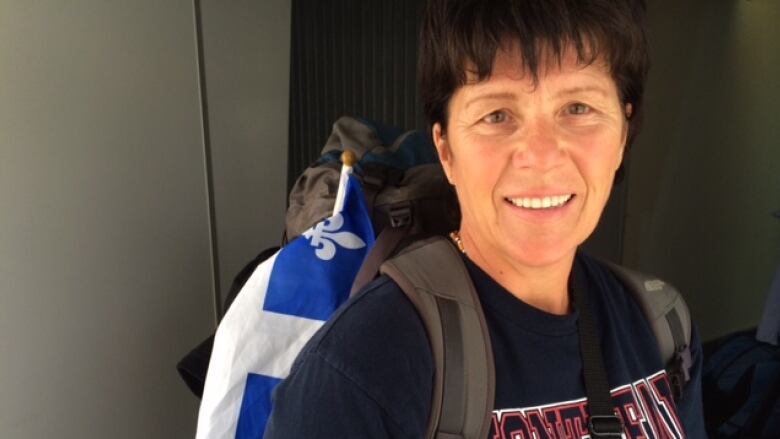Nepal earthquake: Rescuers worry, plan on flight to Kathmandu
Canadian paramedic Ginette Travers on her way, on her own dime

CBC News senior correspondent Adrienne Arsenaultisen route to Kathmandu, Nepal, scene of the earthquake Saturday that killed more than 4,000 people. The magnitude 7.8 quake devastated central Nepal from Mount Everest to Kathmandu.
Again. Trying again.
It is a substantially larger plane trying once more to get from Abu Dhabi toKathmanduthis Tuesday. This flight is now packed with relief workers and Nepalese citizens. Their cell phones are already burning up as they sort logistics; even as they waited to take off.
For medical staff on board here like Doctors Without Bordersthe concern rightly seems about getting to villages beyondKathmandu. Many of them already have small helicopter pads. That's good. But others are at least a day's walk from the road head. And they are in areas already prone to landslides.
- Help from above: Canadian drones sent to Nepal for disaster relief effort
- Water, food, medicine in short supply as death toll climbs
- Canadians send relief supplies, will match donations for Nepal
Every aftershock makes it worse. It is otherwise beautiful steep terrain.
But if you're in charge of getting help to them there's a lot to sort out. How do you, say, set up an inflatable field hospital on terraced terrain?
It's not like Haiti or the Asian tsunami with flat stretches to accommodate the temporary clinics and surgical units. Plus they know there are particular injuries to watch for. In earthquakes, crush injuries are the obvious concern. Than can mean amputations and serious damage to organs.

There is also a worried face from the World Food Program.
There are uniformed rescue teams with patches showing South African and Swiss flags. And then there is the giant Montreal Canadiens flag draped across the knapsack of a Quebec-born, Alberta-trained paramedic. The Fleur-de-lis is sticking out of her backpack pocket.She's wearing a Habs T-shirt. Of course. There's a vision of home far away.
She is Ginette Traversy.
She's a compact, bright-faced, giant-hearted woman. She is alone, as in not with an NGO. As in, she paid for her own ticket to Kathmandu.
She is strong and skilled and loaded with supplies. She has arranged to go to a small village north of Kathmandu, closer to the epicentre. It's a place where people live and farm together. It's also a village she visited four years ago and fell hard for. She's been back a few times, always bringing supplies and teaching first aid.
She knows they're in trouble now.
"I feel like they are all part of my family," she told us.
Nothing,it seems, would keep Traversy away from helping them now. Just let this plane land, she and the others on board keep saying.












_(720p).jpg)


 OFFICIAL HD MUSIC VIDEO.jpg)
.jpg)



























































































